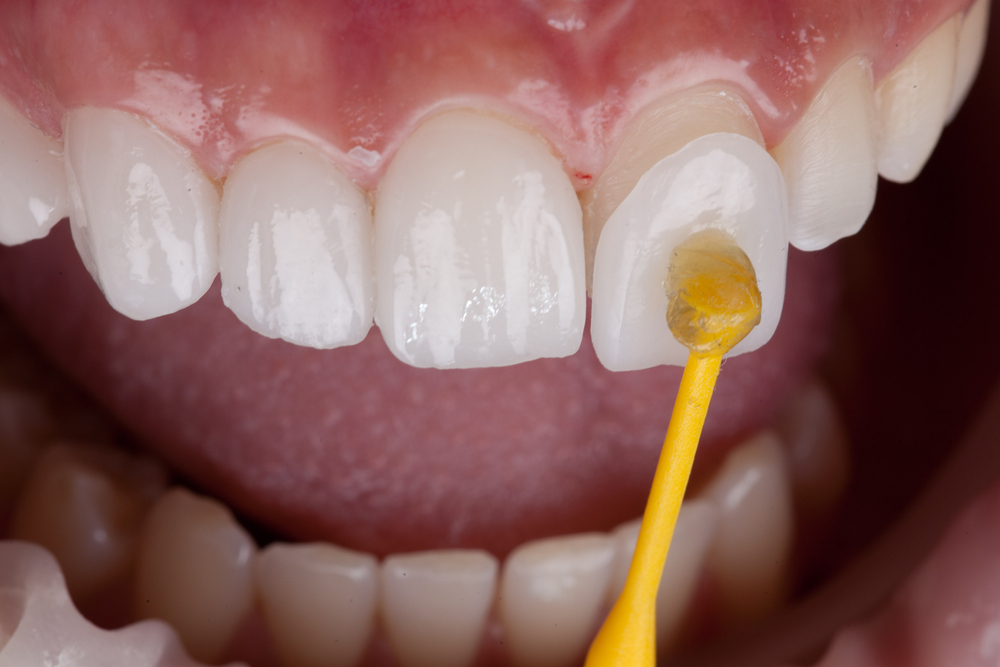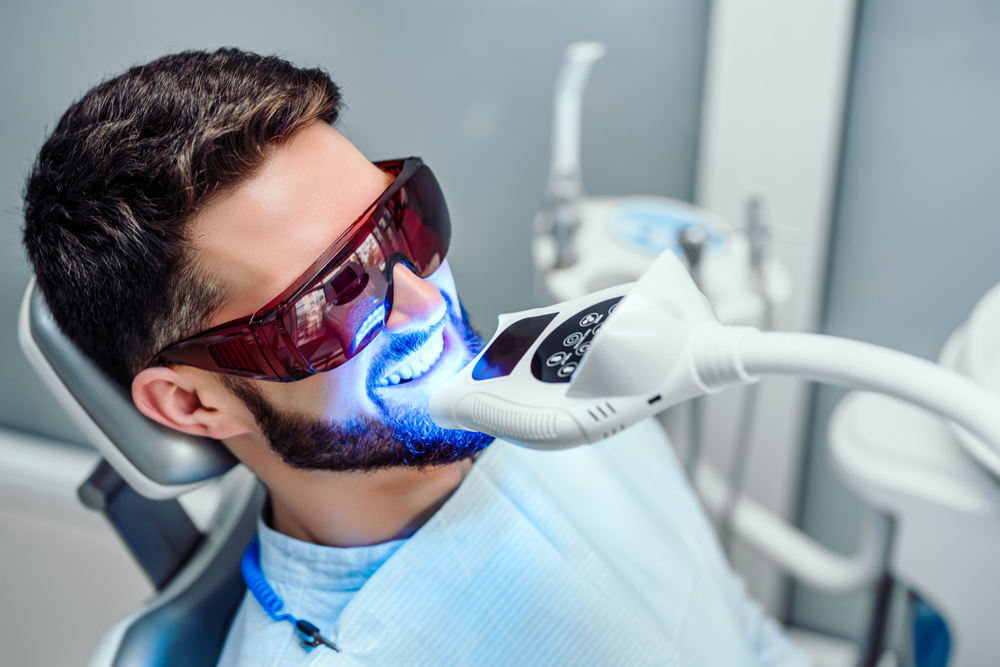We’ve come a long way in the world of teeth straightening. Remember the time when bulky metal braces were the only way to get that picture-perfect smile? Fast-forward to today, and Invisalign has rocked the orthodontic world with its discreet design. It’s been a game-changer, honestly. But, just like with ice cream flavors, not everyone goes for the popular choice. So, if you’re thinking, “maybe Invisalign isn’t for me,” you’re in for a treat. In this article, we’re going to chat about Invisalign alternatives that might just tickle your fancy.
What is Invisalign? A Quick Recap

Before we delve into the world of Invisalign alternatives, let’s get the basics straight. What’s all the buzz about Invisalign anyway? Well, think of it as the modern-day magic trick for teeth. Invisalign is a set of clear aligner trays made just for you. These trays slide onto your teeth and, over time, they guide your teeth to where they should be. The cool part? They’re nearly invisible. Yup, you read that right. You can straighten your teeth without anyone even noticing.
And here’s the cherry on top: they’re removable. Imagine eating your favorite sticky candy or popcorn without any worries. Just remove the tray, enjoy, brush, and then slip it back on. It’s that easy. But while Invisalign is awesome for many, it’s not the only player in the game. Let’s explore some Invisalign alternatives and see what else is out there.
Why Consider Invisalign Alternatives?
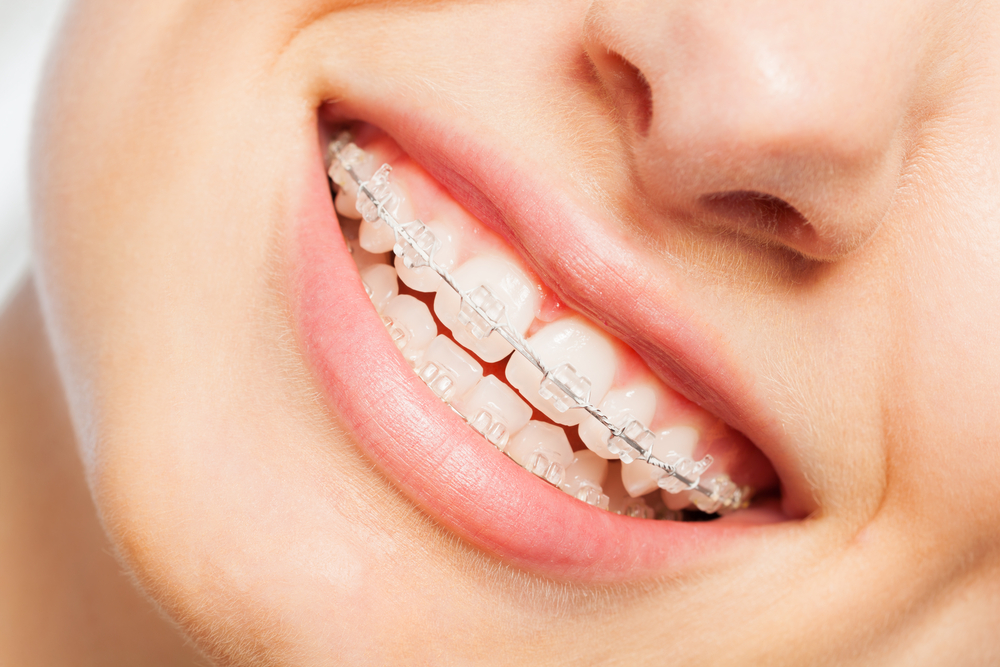
Invisalign has been a sensation in the orthodontic world. However, like choosing between coffee and tea, it’s all about personal preference and need. Everyone’s teeth, mouth shape, and dental goals are unique. For some folks, Invisalign might be the dream solution, but others might face challenges.
Here’s the deal: Invisalign relies heavily on the wearer’s commitment. You’ve got to wear those trays for the majority of the day. Forgetfulness can lead to longer treatment times. Also, if your teeth need a more aggressive kind of love and attention, Invisalign might not be up to the task. The trays might also feel a bit awkward for some, especially in the beginning. So, if you’re feeling like maybe Invisalign isn’t hitting the mark, there’s no harm in scouting out some alternatives.
Direct Competitors to Invisalign
Invisalign might be the popular kid on the block, but it’s not the only clear aligner option out there. The market for teeth straightening has expanded, bringing a host of contenders to the scene. If you’ve been curious about Invisalign’s cousins, let’s introduce you to a few:
- ClearCorrect: This is like Invisalign’s close sibling. ClearCorrect uses transparent aligners that are crafted specifically for your teeth. They’re flexible in terms of wear time, and many find them to be a cost-effective alternative to Invisalign.
- Byte: Enter the era of teledentistry with Byte. Byte allows users to achieve teeth straightening at home. They send you an impression kit, you send it back, and voila! Your aligners arrive at your doorstep. They also boast a unique HyperByte technology, which they claim reduces treatment time significantly.
- Six Month Smiles: As the name suggests, this method aims for a short treatment duration, typically around six months. They offer clear braces and aligners, focusing on moving the teeth that show when you smile.
- FastBraces: Innovation is the name of the game with FastBraces. They’ve revamped the traditional brace design to target the root and crown of the tooth simultaneously. The result? A potentially faster treatment time for some patients.
- SmileDirectClub: A major player in the teledentistry world, SmileDirectClub provides clear aligners without the frequent dental visits. After an initial check or using their at-home impression kit, you receive aligners tailored for you. It’s convenient, but it’s essential to remember that not having regular in-person dental checks might not be suitable for everyone.
Our Thoughts
The dental industry is buzzing with options, each with its unique selling points. While some people are drawn to the convenience of remote treatments like Byte and SmileDirectClub, others might prefer the more hands-on and traditional approaches of options like FastBraces or Six Month Smiles. The most important thing is to research, consult with professionals, and choose what aligns best (pun intended) with your dental needs and lifestyle. After all, it’s your smile, and it deserves the best!
Traditional Braces: The Oldest Competitor

Ah, traditional braces. These have been around for ages, and there’s a good reason for that. Let’s take a stroll down memory lane. Picture those shiny metal grids that many of our friends, family, or even we sported back in the day. That’s them, the tried and true traditional braces.
How do they work? It’s science and a bit of engineering. Small metal brackets get glued onto the teeth, and then wires connect these brackets. Over time, with regular adjustments by an orthodontist, these wires pull or push the teeth into a straight line.
Now, the upside? They’re powerhouse performers. They can tackle a range of dental issues, from the simple to the complex. But, on the flip side, they’re not exactly a secret. They’re visible and can sometimes be a food trap. Ever tried cleaning spinach out of braces after lunch? Not fun. Plus, there’s the occasional poking wire or bracket. Ouch! But if you’re after effectiveness and aren’t bothered about flashing a metallic grin, these old-school heroes might just be your pick.
Ceramic Braces: The Invisible Choice
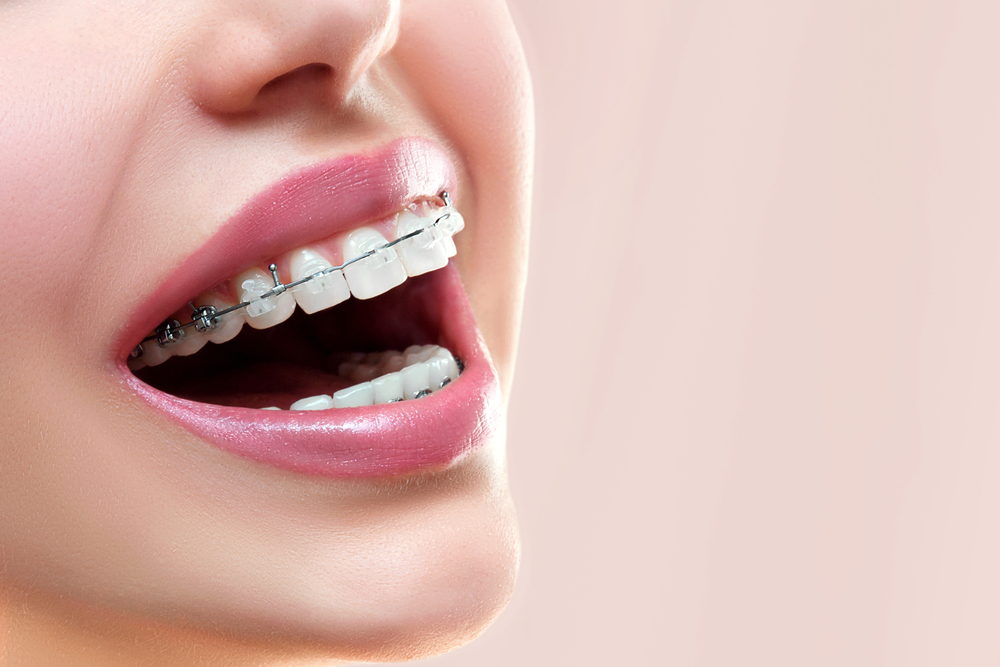
For those who like the robustness of traditional braces but cringe at the thought of a metallic smile, there’s a superhero in town: ceramic braces. Picture the strength of traditional braces but with a chameleon-like ability to blend in. The brackets are made of ceramic, which is colored to match the shade of your teeth. This means you get the same power-packed treatment as traditional braces, but with a much subtler appearance.
Sounds perfect, right? Well, almost. While they’re a fantastic Invisalign alternative, there’s a teeny catch. Ceramic braces can stain over time, especially if you’re a fan of curry, coffee, or red wine. Being vigilant about brushing and flossing can help keep them sparkling. Regular dental check-ups? Non-negotiable!
Lingual Braces: Hidden Behind the Teeth
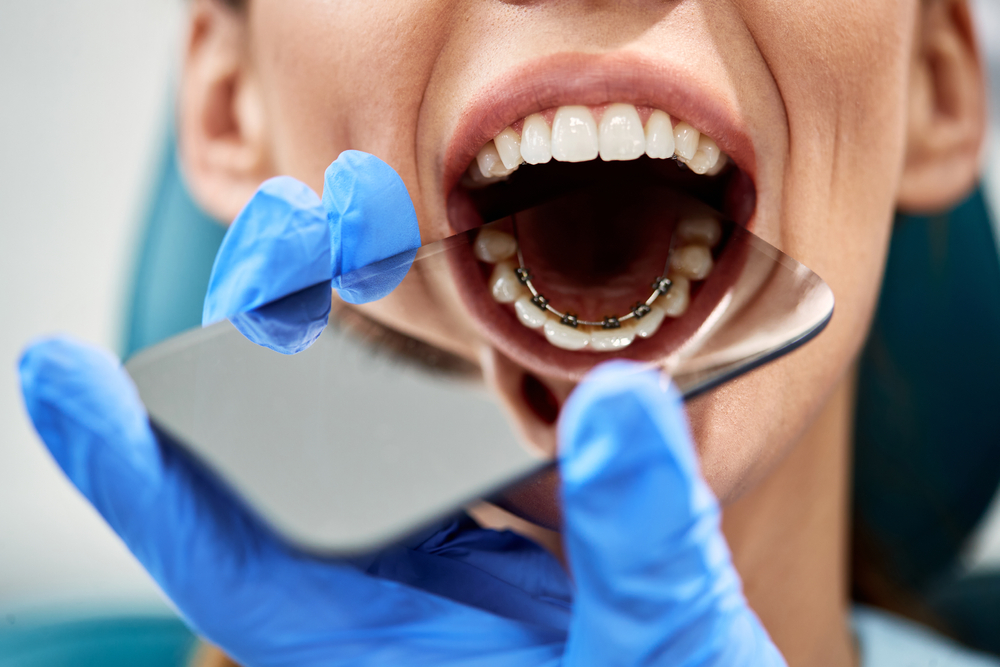
Now, if you’re the kind who loves a good magic trick, lingual braces will be right up your alley. Imagine all the oomph of traditional braces but with an invisibility cloak. Yes, that’s lingual braces for you. Instead of being on the front of your teeth, these braces take a backseat, literally. They’re fixed on the inside or “lingual” side of your teeth.
The biggest win? They’re completely hidden from view. You could be having an intense teeth-straightening session, and the world would be none the wiser. However, every magic trick comes with its secrets. Lingual braces can initially feel a tad strange on the tongue and might affect speech slightly. And when it comes to cleaning, they demand a bit more TLC. Those hard-to-reach spots can be a challenge but with the right tools and a pinch of patience, it’s all manageable.
So, if you’re all about keeping things on the down-low and love surprises, lingual braces might just be the Invisalign alternative you’ve been looking for.
Clear Aligners: Beyond Invisalign
While Invisalign might be the poster child for clear aligners, it’s got some neighbors on the block. Brands like ClearCorrect and SmileDirectClub have popped onto the scene, offering their unique take on the clear aligner concept. Essentially, they all share the same goal: to straighten teeth using transparent trays. But, like choosing between different coffee brands, each has its unique flavor.
ClearCorrect, for instance, boasts a flexible treatment plan and might be slightly gentler on the wallet. SmileDirectClub offers a direct-to-consumer model, meaning a lot of the process can be done from the comfort of your home. But remember, every mouth is unique, and while one brand might be perfect for your friend, it might not suit you. It’s a bit like finding the right shoe fit, so it’s wise to do some homework and chat with an orthodontist before taking the plunge.
Retainers for Minor Adjustments
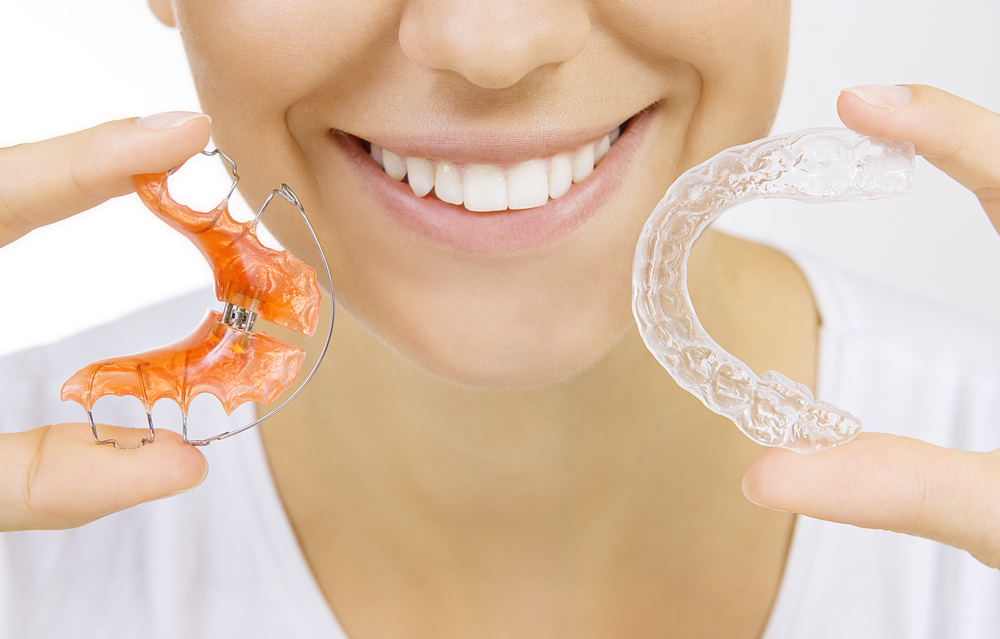
Not every dental journey requires a full expedition. Sometimes, all you need is a mini adventure. That’s where retainers come in. If your teeth need just a little nudge rather than a major move, retainers could be your golden ticket. They’re lightweight, less complex than braces, and, best of all, perfect for minor tweaks.
Retainers are custom-made, designed to hold your teeth in their current position or to make tiny adjustments. They come in various forms, some clear and others with a wire framework. But here’s the thing: they rely heavily on discipline. Yes, you’ve got to wear them as instructed, or else they can’t do their magic. So if you’re someone who tends to misplace things or forget, it might be a challenge. But for those minor shifts, and with a sprinkle of commitment, retainers are a solid choice in the vast world of Invisalign alternatives.
Palatal Expanders: For More than Just Straightening
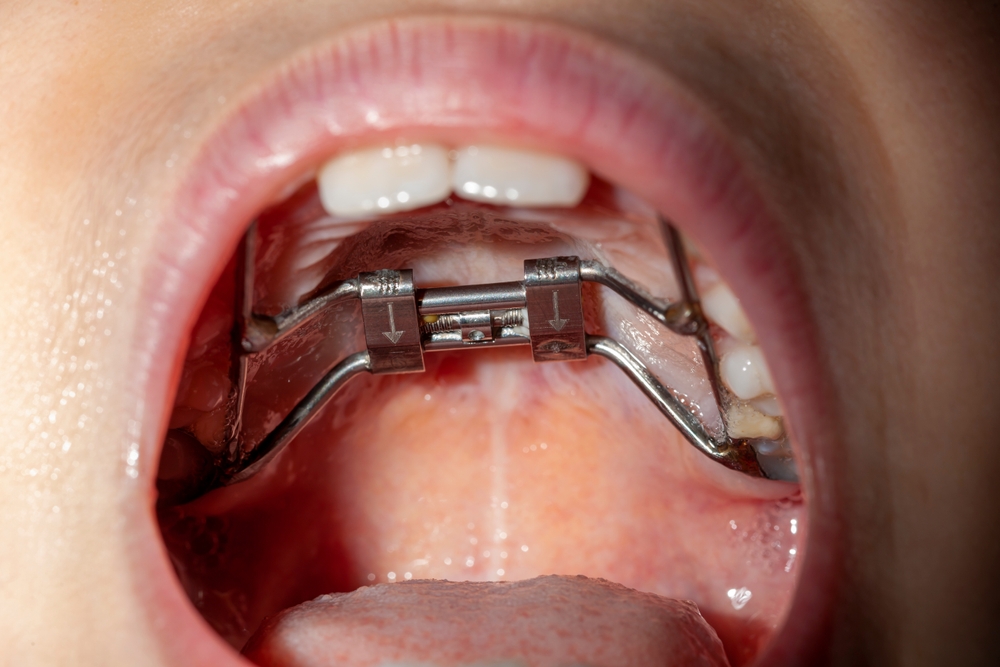
Picture a cozy room filled with too much furniture, and you’ve got an idea of what a crowded mouth feels like. When there’s not enough space for all your teeth to fit comfortably, palatal expanders come to the rescue. It’s like adding an extension to your room, giving everyone a bit more breathing space.
Here’s the deal: A palatal expander is a device that’s fitted to the upper jaw. Over time, it’s gradually adjusted to widen the upper palate. As it does its thing, new space is created, allowing teeth more room to spread out. This is especially handy for those whose mouths are still growing.
Sounds pretty neat, right? But like trying on a new pair of shoes, it can feel a tad unusual at first. You might sense a bit of pressure or have the occasional lisp. But with time, and as the palate adjusts, things get more comfortable. So, if your mouth’s feeling a little snug, a palatal expander might be just the ticket.
Palatal expanders are sometimes seen by patients as barbaric torture devices. But, they can be an extremely important way to guide the proper growth and development of a child’s face and upper jaw. In fact, many cases of sleep apnea, a potentially life-threatening condition that causes many other illnesses, could possibly be avoided with palatal expansion at a young age.
Self-Ligating Braces: The Modern Twist on Tradition
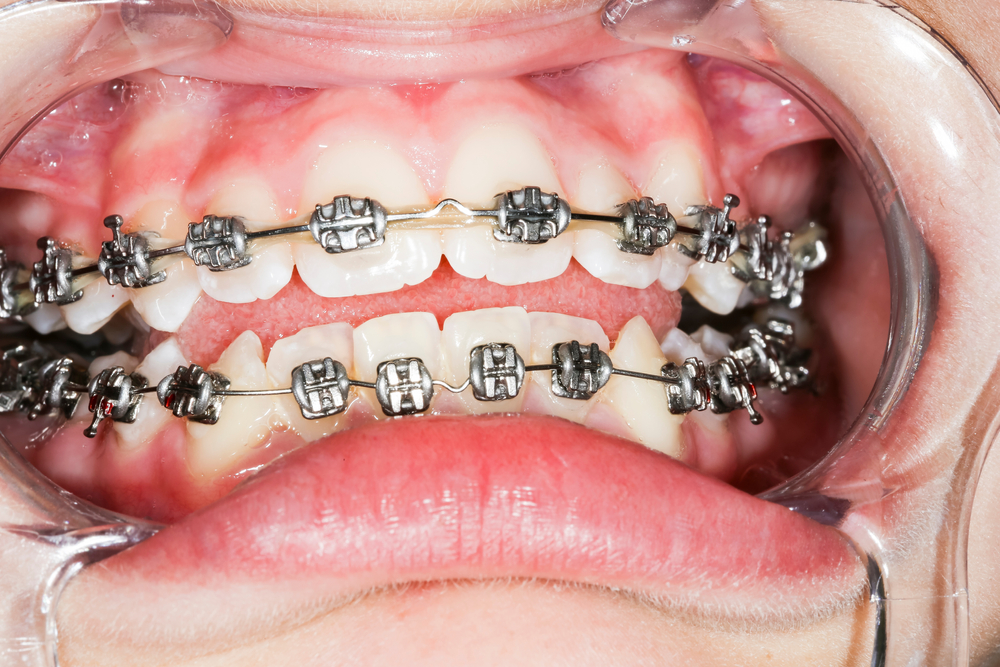
Traditional braces got a tech upgrade, and the result? Self-ligating braces. Think of them as the cooler, more efficient sibling of traditional braces. Instead of using elastics to hold the wire, these braces come with special clips or doors.
So, why’s that cool? Well, these clips reduce the amount of friction against the wire. This means your teeth can slide a little more freely and comfortably. The real win? Often, this can speed up the straightening process. Plus, fewer visits to the orthodontist for adjustments? That’s always a bonus.
Visually, they’re pretty similar to traditional braces, but they come with a few added perks. They’re easier to clean, can be more comfortable, and, in many cases, the treatment can be a tad quicker. So, for those wanting the reliability of traditional braces but with a sprinkle of modern innovation, self-ligating braces could be the perfect Invisalign alternative.
The Ugly Side of Teeth Straightening: When Good Intentions Go Awry
Venturing into the world of teeth straightening without adequate knowledge can sometimes lead to less-than-stellar outcomes. While the alternatives we discussed promise convenience and affordability, it’s crucial to tread with caution. Here’s the not-so-pretty side of things:
- At-Home Treatments Without Supervision: The allure of fixing teeth from the comfort of home, without pesky dentist appointments, is tempting. Brands like Byte and SmileDirectClub cater to this demand. Although these at-home treatments can and do work well for many patients, there is a risk that they can make things worse if used incorrectly. Without regular professional checks, minor issues can escalate, potentially leading to bite problems, tooth loss, or even gum disease.
- Complex Cases Handled by Inexperienced Providers: It’s like asking a general practitioner to perform open-heart surgery. Certain dental situations, such as a complex skeletal malocclusion, require the expertise of an orthodontist. When inexperienced general dentists, albeit well-meaning, attempt to address such cases without the necessary specialized knowledge, the results can be far from ideal. Patients might end up with a straight smile but suffer from jaw pain, speech issues, or even digestion problems if the bite isn’t aligned properly.
- Overlooking Underlying Issues: The root cause (again, pun intended) of dental problems isn’t always apparent. For instance, a crowded smile might be due to small jaw size, requiring a palatal expander. Using aligners in such cases will only treat the symptom, not the cause. The result? Temporary fixes that don’t last.
- Going for the Quick Fix: Brands promising rapid results like Six Month Smiles can be appealing. However, moving teeth too swiftly can result in root resorption, where parts of a tooth’s root dissolve, leading to potential tooth loss.
In the Pursuit of a Perfect Smile
Having a plethora of choices is fantastic, but it also means patients need to be more informed and discerning. The journey to a perfect smile isn’t a race; it’s a marathon. Cutting corners, skipping professional advice, or opting for providers lacking the necessary expertise can lead to complications that are both painful and expensive to rectify.
So, before diving into the next shiny teeth-straightening solution, do your homework. Consult with specialists, understand the scope and limitations of treatments, and always prioritize your long-term dental health over short-term cosmetic changes. Your future self will thank you!
Making the Right Choice for Your Smile
Navigating the world of teeth straightening can feel like deciphering a menu in a foreign language. With so many Invisalign alternatives out there, how do you pick the perfect one? The secret is that there’s no universal “best” choice, but there’s definitely a “best for you” choice.
Think of it like choosing a pair of shoes. You’d consider the occasion, comfort, style, and price, right? Similarly, when it comes to your teeth, consider your dental needs, daily lifestyle, and budget. Are you looking for something discreet? Maybe you want a quick solution? Or perhaps you’re seeking a budget-friendly option?
But just like you wouldn’t buy shoes without trying them on, don’t settle on a dental treatment without professional advice. A chat with an orthodontist can provide clarity, ensuring you get a solution tailored to your needs.
And speaking of professionals…
If you happen to be around Glendale, AZ, and are on the hunt for top-notch dental expertise, the doors of Smile Science Dental Spa are always open. Dr. Richard Dawson and Dr. John Turke aren’t just any dentists; they’re like the wizards of the dental world. From routine check-ups to intricate dental procedures, they’ve got the skills and knowledge to guide you. So if you’re dreaming of a sparkling, aligned smile, they’re the ones to call!
Your Next Step
The journey to a radiant smile is as unique as you are. While Invisalign and its alternatives have their pros and cons, the final decision boils down to what feels right for you. After all, your smile is your signature. It speaks volumes before you even say a word. So, choose wisely, seek expert advice, and always prioritize your comfort and health. Cheers to embarking on a journey towards a confident and gleaming smile!




